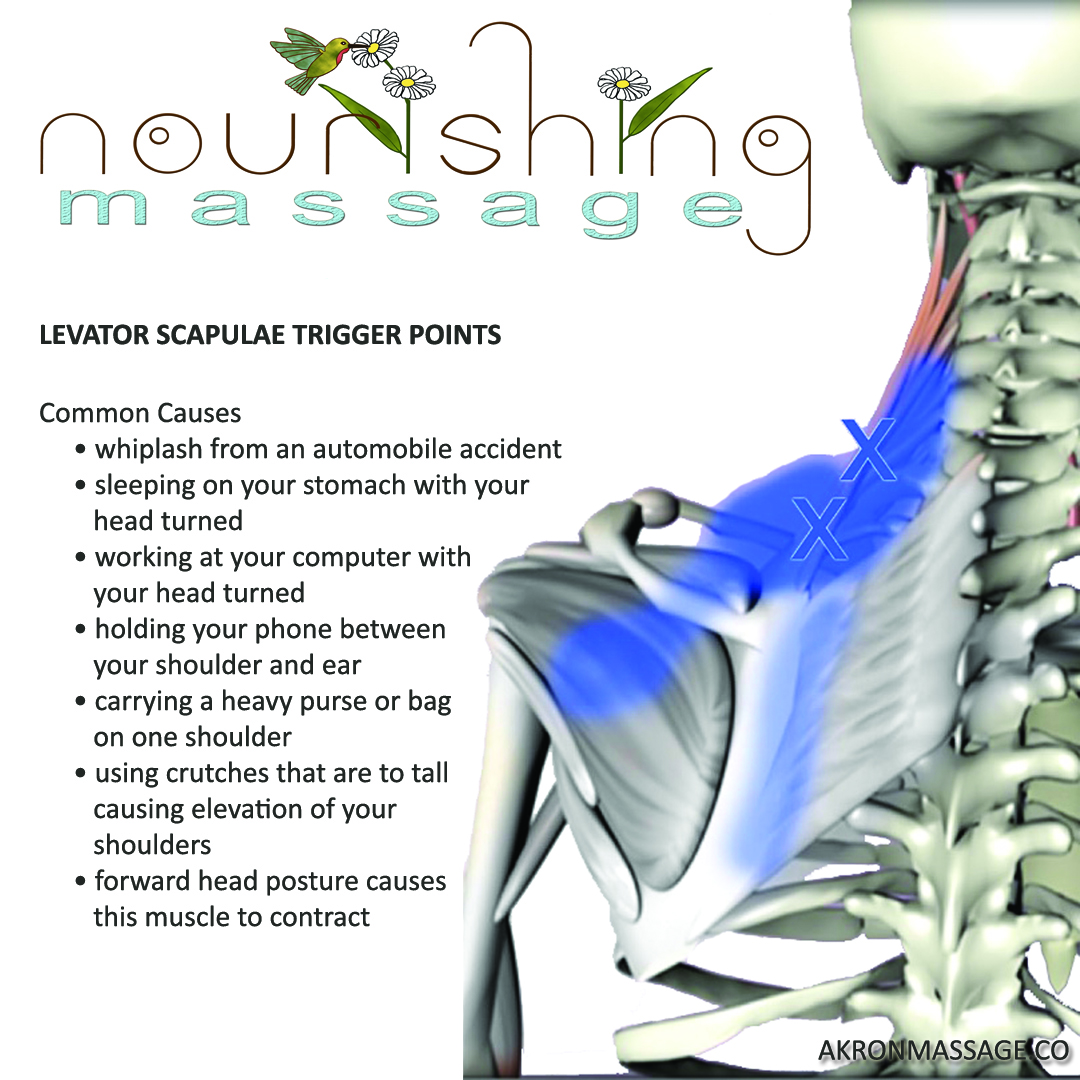

There was a significant difference between the pretest and posttest results in the experimental group, and a significant difference in posterior neck temperature between the two groups. Hold for up to 60 seconds, or however long you can manage.

Turn head toward other side and look down. The left hand can be raised to the back of the head and gently pulled down a little more to lengthen the stretch even further. Exercise Description: Seated Levator Scapulae Stretch on Swiss Exercise Ball Classification: Stretches Instruction: Sit in neutral on Swiss Exercise Ball. Sit, one hand tucked under hip on side to be stretched, other hand over top of head. The temperature of the posterior neck was then measured using digital infrared thermographic imaging. Tilt the head to the right until you feel a good stretch in the back of the neck. The exercise program comprised middle and lower trapezius strength exercises and levator scapulae and upper trapezius stretching exercises. Stand with right side against wall and place right elbow on wall as right arm reaches between the shoulder blades. Slowly turn your neck to the right and do a neck flexion. The control group (n=15) did not participate in the exercises. STARTING POSITION: Sit on a chair and grab your head with your left hand. The experimental group (n=15) participated in strength and stretching exercises, three times per week for 4 weeks. After measuring cervical alignment using the Global Posture System, 30 students with forward head posture were selected and divided into two groups. rolling them down and around as far as possible. Bend head sideways, bringing ear towards the shoulder. The purpose of this study was to determine the effectiveness of strength and stretching exercises on upper crossed syndrome. Levator Scapula Stretch (fig.13) To stretch the right side: Place right hand behind head with elbow pointing upwards. This is a self assisted stretch for the levator scapulae muscle.


 0 kommentar(er)
0 kommentar(er)
